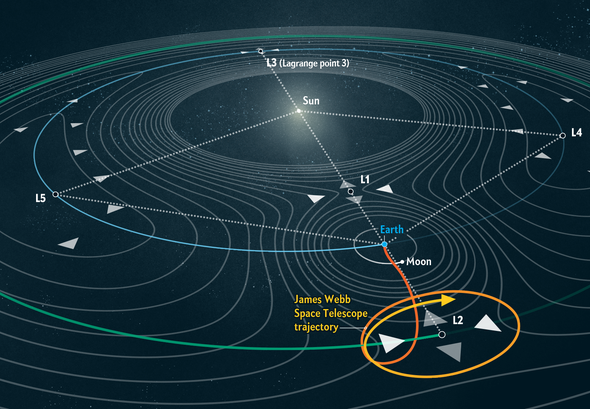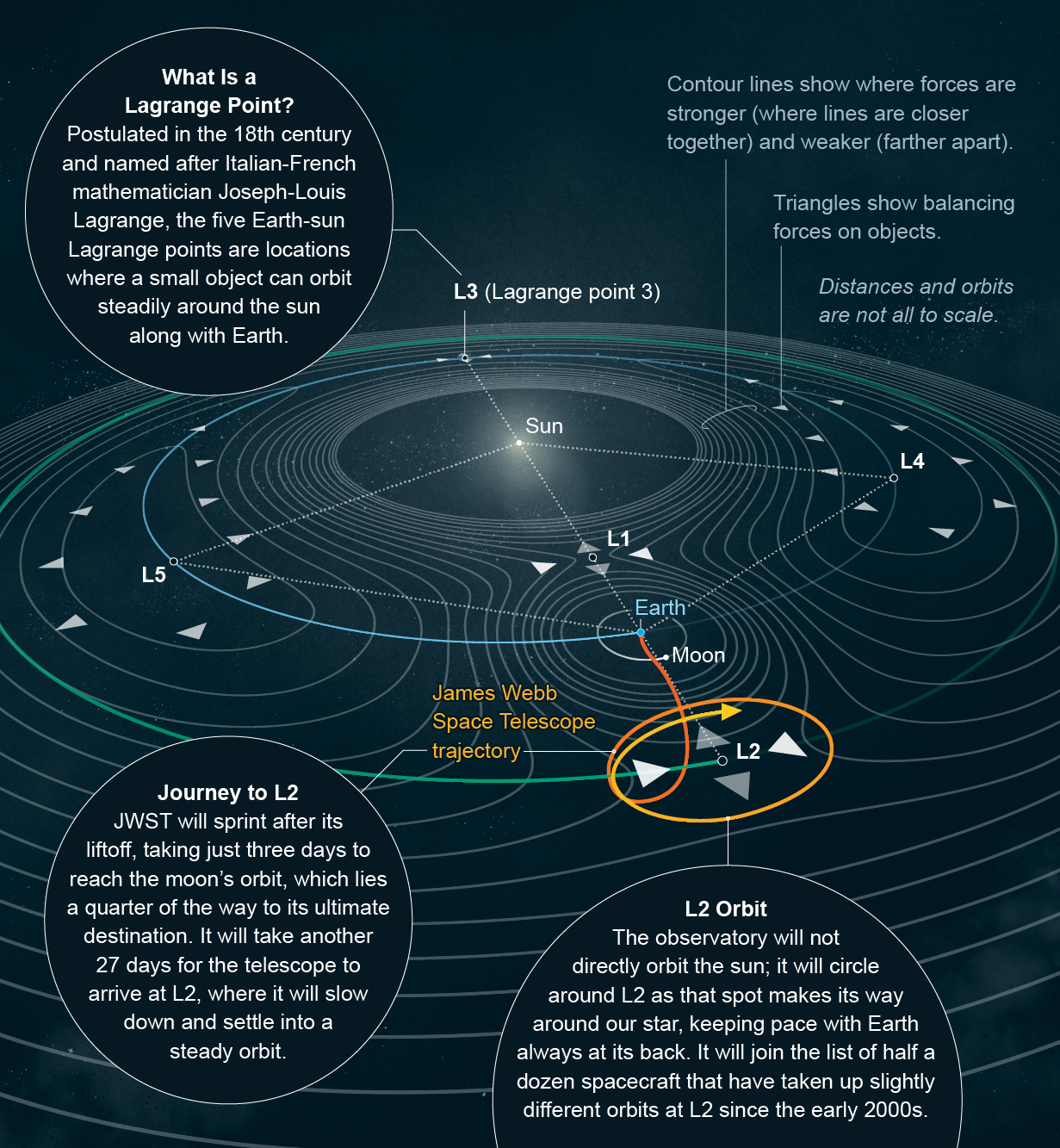NASA’s James Webb Space Telescope will travel to a special spot where the gravity from Earth and the sun is balanced

The most ambitious space telescope built to date is about to start peering at the universe through infrared eyes. The $10-billion James Webb Space Telescope (JWST) is designed to see farther back in space and time than ever before, where light has been stretched by the expansion of space into much longer wavelengths. To see this faint light, the telescope must observe far from Earth and its contaminating light and heat. After launch, JWST will travel 1.5 million kilometers to Earth’s second “Lagrange point” (L2), a spot in space where the gravitational forces of our planet and the sun are roughly equal, creating a stable orbital location. This vantage point will allow JWST to orbit with its giant sunshield positioned between the telescope and the sun, Earth and moon, shielding the telescope and keeping it at a frigid –370 degrees Fahrenheit.

This article was originally published with the title “A Telescope’s Long Journey” in Scientific American 326, 1, 80 (January 2022)
doi:10.1038/scientificamerican0122-80

